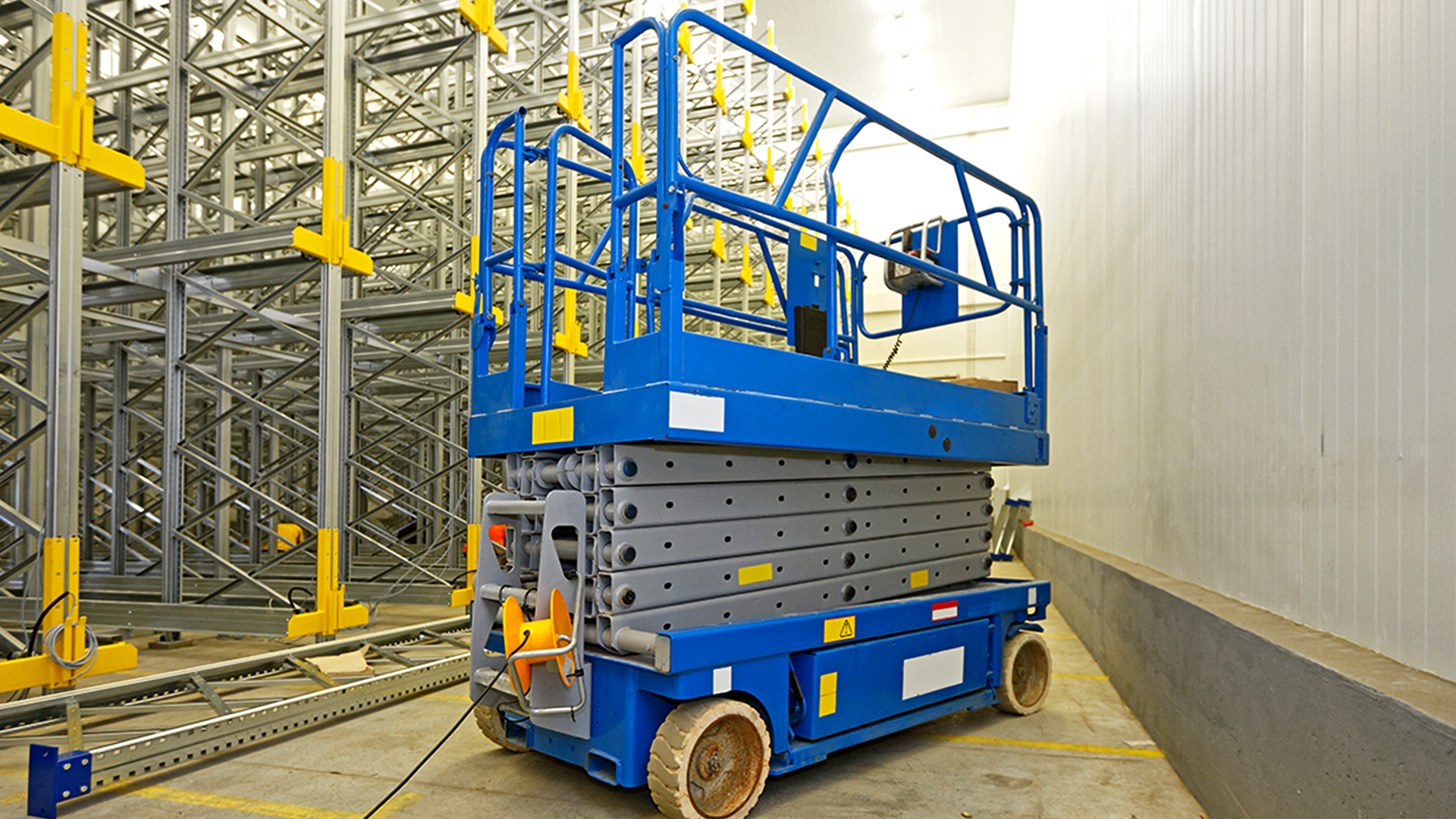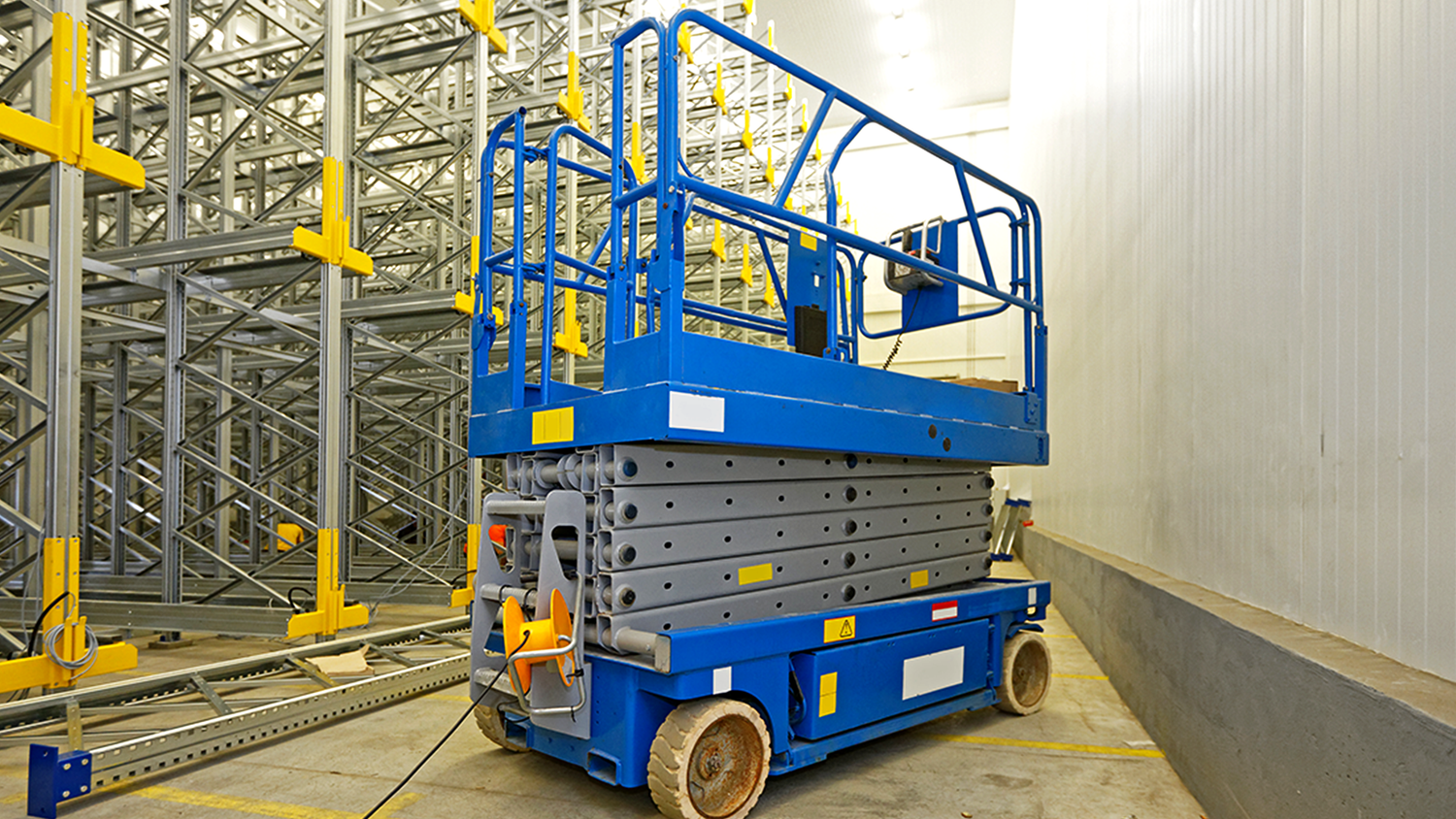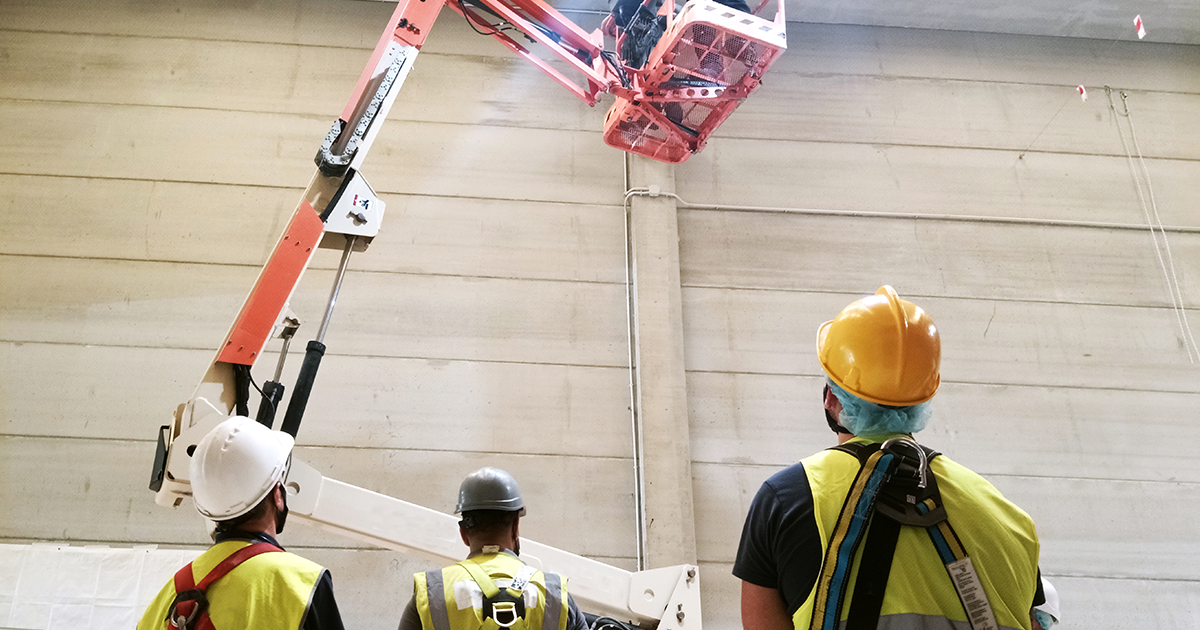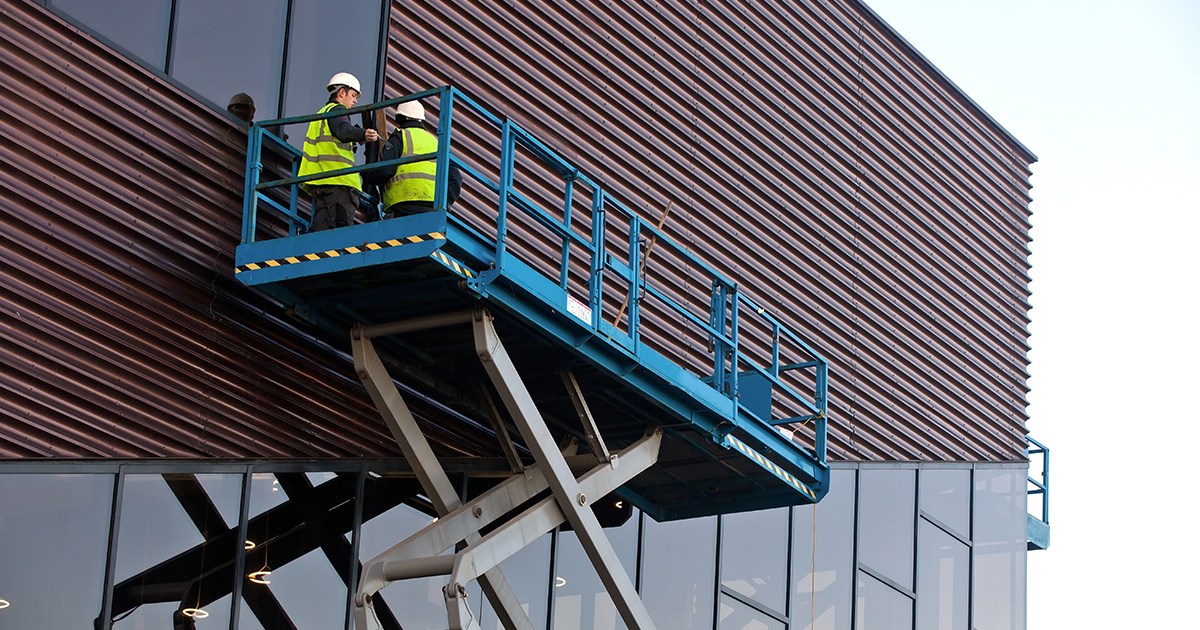What Must Be Done Daily Before Using a Scissor Lift?
A scissor lift, an invaluable tool in many industrial and construction environments, is a motorized vehicle with a railed platform that can be raised straight up. It's named for the crisscrossing metal supports that elongate as the platform is lifted. While this equipment is widely used for its versatility and convenience, it is not without risks. As such, it's crucial to perform daily checks before operating a scissor lift to ensure safety and efficiency.
Daily checks not only preserve the lifespan of the machine, but they also significantly decrease the chances of accidents, which can lead to severe injuries or even fatalities. Many regulatory bodies, such as the Occupational Safety and Health Administration (OSHA) and the American National Standards Institute (ANSI), have set guidelines for the operation of scissor lifts, and performing daily inspections is a crucial part of these guidelines.
Understanding Scissor Lift Safety
Before we delve into the specifics of the daily checks, it's crucial to understand the overarching safety guidelines that govern scissor lift operations. Regulatory bodies such as the Occupational Safety and Health Administration (OSHA) and the American National Standards Institute (ANSI) provide these guidelines, and they are essential in ensuring safe operation.
First and foremost, only trained and authorized personnel should operate scissor lifts. This training should encompass both theoretical and practical knowledge, covering topics such as safe operating procedures, hazard identification, and emergency protocols. Reputable training also includes hands-on experience, allowing operators to familiarize themselves with the machinery under supervised conditions.
Safety guidelines go beyond just the operation of the machinery; they also cover maintenance and inspection procedures. Regular and thorough inspections can help identify potential issues before they turn into major problems. This preventative maintenance can be the key to avoiding costly repairs or, worse, accidents due to equipment failure.
Neglecting safety precautions can have dire consequences, including severe injuries or fatalities. In 2020, for example, OSHA reported that falls, struck-by incidents, and caught-in/between incidents were among the top causes of fatal occupational injuries. Many of these could have been prevented with proper safety measures and adherence to guidelines.
Furthermore, ignoring safety guidelines can lead to hefty fines and penalties. OSHA and other regulatory bodies take violations seriously and will not hesitate to enforce penalties when safety guidelines are disregarded.
Understanding and implementing safety guidelines is an essential part of operating a scissor lift. As we delve into the daily checks necessary before using a scissor lift, keep in mind that these checks are part of a broader commitment to safety. They are not just boxes to tick off but essential steps in maintaining a safe and efficient work environment.
Pre-operation Inspection
Before operating a scissor lift, it's essential to perform a thorough pre-operation inspection. This inspection serves two primary purposes: ensuring the physical integrity of the lift and verifying the functionality of its components. Both physical and functional tests are crucial to guaranteeing the safety and efficiency of the equipment.
Physical Inspection
- Checking the condition of the tires: Begin by inspecting the tires to ensure they're properly inflated and in good condition. Look for signs of wear, cuts, or embedded objects that could compromise the tires' functionality or safety. If the lift uses solid tires, check for any signs of damage or excessive wear.
- Inspection of the scissor mechanism and platform: The scissor mechanism should be checked for any signs of damage, such as cracks, corrosion, or bending. Additionally, the hydraulic system should be inspected for leaks. Ensure the platform is clean, free of debris, and not slippery.
- Checking the guardrails for stability: The guardrails are an essential safety feature on a scissor lift. Check that they are secure and free from damage.
Functional Tests
-
Testing controls and emergency stops: All controls should be tested to ensure they are operating correctly. This includes the lift and lower controls, drive controls, steering controls, and brakes. In addition, the emergency stop button should be tested to ensure it's functioning properly.
-
Checking the lift and lower functions: The lift should be raised and lowered to verify that these functions are working smoothly. The lift should not jerk or stutter when moving.
-
Testing the tilt and alarm sensors: If your scissor lift is equipped with tilt sensors and alarms, these should be tested to ensure they are working correctly. They play a crucial role in alerting the operator if the lift is on an unsafe slope.
Importance of Documenting the Inspection Results
Documenting the results of the inspection is as important as the inspection itself. Keeping an accurate record of the checks performed, and any issues found, helps in maintaining the equipment's service history. This can be valuable for troubleshooting future problems and is often required for compliance with safety regulations.
Remember, if any issues are identified during the pre-operation inspection, they must be addressed before the lift is used. It's far better to delay work than to risk an accident due to faulty equipment.
Checking the Work Environment
Before using a scissor lift, inspecting the surrounding work environment is as crucial as examining the equipment itself. This process helps identify potential hazards that could disrupt the safe operation of the lift or pose risks to workers.
Importance of Assessing the Work Environment
The work environment can significantly impact the safety and efficiency of a scissor lift operation. Factors like ground conditions, overhead obstacles, and weather conditions can all influence how the lift performs and the safety precautions that need to be taken. Therefore, a thorough assessment of the work environment should be a part of your daily routine before using a scissor lift.
Identifying Potential Hazards
- Uneven surfaces: Scissor lifts require a solid and level base for safe operation. Examine the ground for uneven surfaces, slopes, holes, or loose materials that could destabilize the lift.
- Overhead obstacles: Always check for overhead obstacles such as beams, power lines, or tree branches, which could be hit when the lift is raised. It's important to maintain a safe distance from power lines to prevent electrical accidents.
- High wind: Check the wind speed before operating a scissor lift, especially when working outdoors. High wind can destabilize the lift, especially when it's fully extended. Most lifts have a maximum wind speed at which they can be safely operated.
Importance of Setting up the Lift Properly
Once potential hazards have been identified, it's important to properly set up the lift. Ensure the lift is on solid, level ground and that any stabilizers or outriggers are properly deployed. Confirm that the lift is a safe distance from any overhead obstacles or power lines. If the lift is being used outdoors, consider wind direction and speed when positioning the lift.
Remember, assessing and preparing the work environment is a critical part of scissor lift safety. Taking the time to identify and mitigate potential hazards can significantly reduce the risk of accidents and ensure the smooth operation of the lift.
Operator's Pre-Use Checklist
Beyond inspecting the equipment and work environment, the operator also has personal responsibilities to ensure their safety and that of others around them. Here's an operator's pre-use checklist:
Ensuring Proper Personal Protective Equipment (PPE)
The operator must wear appropriate Personal Protective Equipment (PPE) before operating a scissor lift. This may include:
- Safety Helmet: To protect from falling debris or bumping the head against overhead objects.
- Safety Footwear: To safeguard from falling objects and offer a good grip on the platform.
- High Visibility Clothing: To ensure the operator is clearly visible to others in the workplace.
- Safety Harness: While not always required on scissor lifts, some circumstances or local regulations may necessitate the use of a safety harness and lanyard.
Checking the Availability and Condition of Safety Gear
The operator should verify that all necessary safety gear is available and in good condition. This includes any required fall protection equipment, fire extinguisher (if required), and any other safety devices specified in the manufacturer's instructions or by local regulations.
Understanding the Lift's Load Capacity
The operator must understand the lift's load capacity and ensure it is not exceeded. This includes the weight of all people, tools, and materials that will be on the platform. Overloading can lead to tip-overs or equipment failure.
In conclusion, the operator's pre-use checklist is an essential component of scissor lift safety. It helps to ensure that the operator is well-prepared and equipped to operate the lift safely. By ticking off each item on this checklist, the operator can significantly reduce the risk of accidents and ensure smooth, efficient operation of the scissor lift.
Emergency Preparedness
Despite all precautions and checks, emergencies can still occur. Therefore, being prepared for emergencies is an integral part of scissor lift safety. Here are some key elements of emergency preparedness:
Understanding the Lift's Emergency Procedures
Every scissor lift has built-in emergency procedures that should be well-understood by the operator and nearby workers. This typically includes knowledge of:
- Emergency Lowering: If the primary power source fails, operators and rescuers should know how to lower the platform using the emergency lowering controls.
- Emergency Stop: The emergency stop button, usually red, immediately halts all machine operations when pressed. Operators must know its location and function.
- Emergency Evacuation: In some cases, leaving the lift may be necessary. Operators should be trained on when and how to safely evacuate.
Ensuring the Presence and Operability of Fire Extinguishers and First-Aid Kits
Fire extinguishers and first-aid kits should be readily available in the work area. Operators should know their location and how to use them. Check these regularly to ensure they're fully stocked and functional.
Role of Regular Drills and Training in Emergency Preparedness
Regular drills and training are essential for ensuring everyone can respond effectively in an emergency. Drills help familiarize workers with the location and use of emergency equipment, evacuation routes, and communication procedures.
In conclusion, being prepared for emergencies is a crucial aspect of scissor lift safety. By understanding emergency procedures, ensuring the availability of necessary safety equipment, and conducting regular drills and training, you can help ensure a swift and effective response in the event of an emergency, potentially preventing injuries and saving lives.
Final Thoughts on Daily Pre-Use Procedures for Scissor Lifts
Operating a scissor lift is not a task to be taken lightly. With the elevated heights and heavy machinery involved, the risks associated with this equipment are significant. However, by adhering to a comprehensive daily checklist, operators can mitigate these risks and ensure a safe and efficient working environment.
The importance of these daily checks cannot be overstated. By performing thorough pre-operation inspections, operators can identify and address potential issues before they escalate into significant problems. This not only ensures the safety of operators and nearby personnel, but it also preserves the longevity and performance of the equipment.
Moreover, an operator's individual responsibilities - wearing the appropriate Personal Protective Equipment (PPE), checking safety gear, and understanding the lift's load capacity - are crucial to their safety and that of their coworkers. Likewise, inspecting and preparing the work environment is a critical part of scissor lift safety that can significantly reduce the risk of accidents.
Lastly, emergency preparedness is a key aspect of scissor lift operation. Even with all precautions taken, emergencies can still happen. Being prepared for these situations through understanding emergency procedures, ensuring the availability of necessary safety equipment, and conducting regular drills and training can make a significant difference when responding to these events.
The daily checks required before operating a scissor lift are a critical part of ensuring safety and efficiency. Adhering to these guidelines not only fulfills a regulatory requirement but also reflects a commitment to maintaining a safe work environment. The few minutes it takes to perform these checks can prevent accidents, save lives, and ensure the smooth operation of your scissor lift, making them a worthwhile investment of time and effort.
References
- Occupational Safety and Health Administration. (n.d.). Scissor Lifts. OSHA. Retrieved from https://www.osha.gov/SLTC/etools/construction/electrical_incidents/scissorlift.html
- American National Standards Institute. (n.d.). Aerial Work Platforms Standards. ANSI. Retrieved from https://www.ansi.org/standards_activities/overview/standards_packages/awp
- Genie Industries, Inc. (n.d.). Scissor Lifts Operator's Manual. Genie. Retrieved from https://www.genielift.com/docs/default-source/products/awp/en/operators_manuals/slab-scissors/en/operator_s_manual_s-40-s-45-genie.pdf?sfvrsn=2





